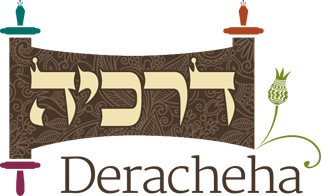| ♥ 0 |
I wanted to ask about showing a tefach in the front. It’s become quite a widely accepted trend where I live to measure a tefach, but then to comb that front section over the top of your sheitel or band fall, so you’re showing the full length of it. Or is there any argument for saying that if that’s become a social norm it can fit with dat yehudit?
Marked as spam
|
|
Private answer
Thank you for your question! We have also noticed that it is increasingly common for women to comb hair over in front of the sheitel. There are many different ways of doing this, leaving different amounts of hair out in different arrangements. So what follows are general rules of thumb. A woman should not leave more hair out of a sheitel than she would leave out of a headscarf or hat. Clipping hair over is different from leaving out a fringe in front, though. When a woman clips or combs her own hair over a sheitel, the areas of the sheitel covered by natural hair are no longer acting as a covering. Therefore, one way of thinking this through is to imagine the sheitel as beginning where the clipped hair ends. I.e., to consider how much hair one would let show in front of a headscarf covering the rest of the hair, and not to let hair brushed over the wig reach beyond that point. As we discuss here, common rulings on how much hair may be left out of a covering range from exposing no hair, to allowing for some fringe at the front, to permitting up to tefach to be exposed, to permitting more. These rulings generally take dat yehudit into account. The guidelines that they provide for how much hair might be left out of a head covering relate to the degree of flexibility that dat yehudit affords. So, for example, Rav Moshe Feinstein maintained that the Torah requires most of the head to be covered and that, within the parameters of dat yehudit, up to a tefach of hair could be uncovered. He defined that tefach two-dimensionally as a square tefach. (This comes out to 64-92 square centimeters.) Rav Moshe assumed that the face is about two tefachim wide, so on his view, hair left out across the hairline could be up to 4-4.8 cm in length. Though some halachic authorities have raised the possibility of measuring a tefach differently (see note 11 here), we have not seen such views advocated in practice. Those who allow for more hair to be uncovered typically reject the tefach as a relevant measure, and instead focus on most of the head being covered, with the extent of further coverage determined by dat Yehudit, understood as accepted practice. We hope that this is helpful. See more Q&A here. Marked as spam
|

